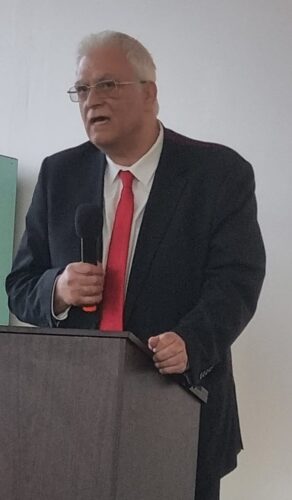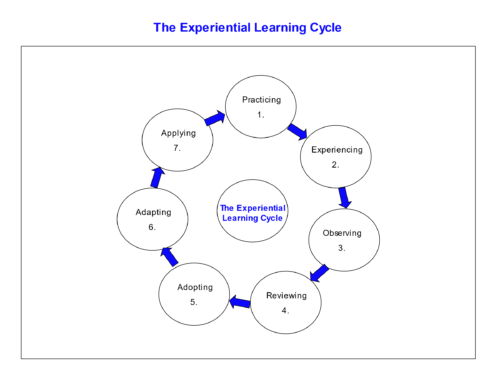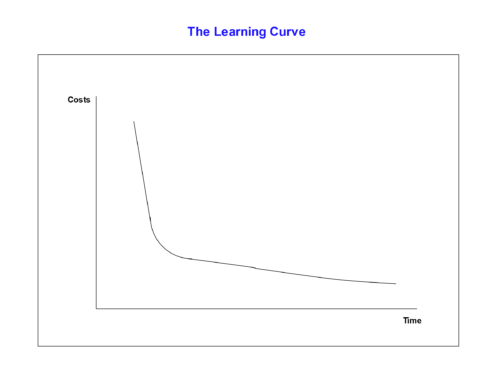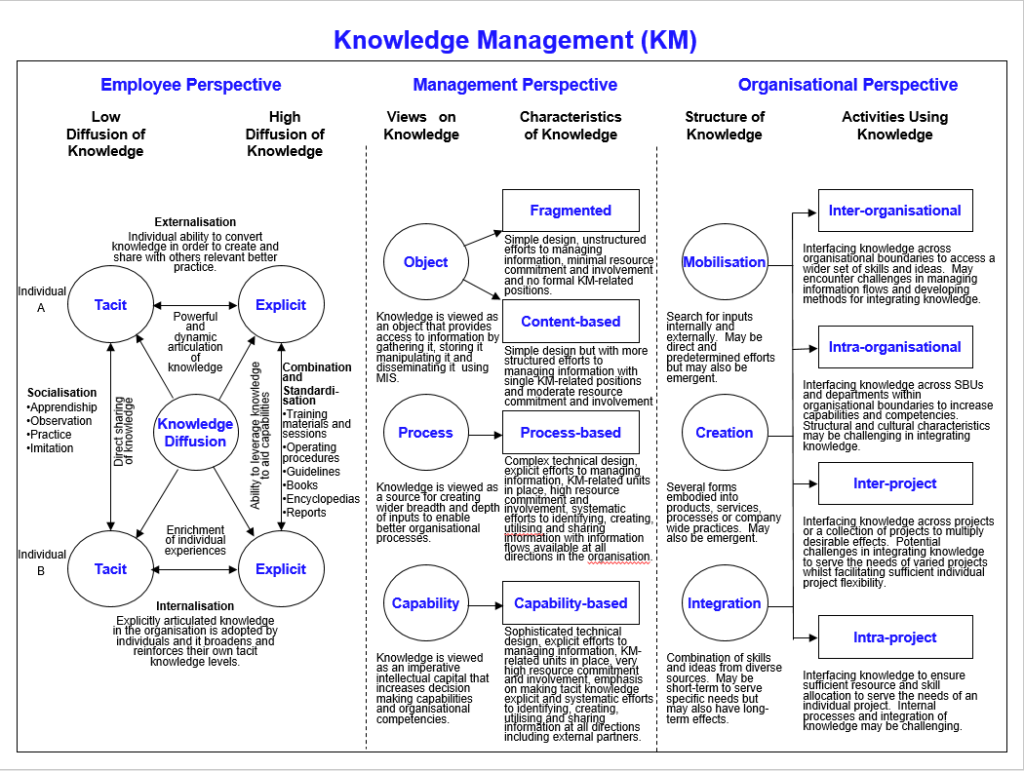The Essence of Knowledge
Article Date | 3 November, 2022
By Dr George Panagiotou, Principal of LSST
Knowledge Management (KM)
.
In highly uncertain and continuously transforming competitive landscapes where the only constant characteristic is relentless change it is not land, labour or capital that provides lasting competitive advantages but rather it is knowledge. ‘Knowledge’, however, is frequently confused with ‘information’. Yet, the two are not necessarily one and the same despite that information is data analysed to the point that enables informed decision-making, because the decision-maker is then called upon to make sense of that information.
Frequently, organisations are preoccupied with ‘capturing’ data through data processing and figure-crunching to codify and quantify all that there is to do to increase efficiencies, lower costs and increase shareholder value (Nonaka, 1991). Though it is true that information is the basis of knowledge, knowledge is a much broader concept, and it includes a great deal more than just quantifiable facts.
Knowledge involves learning, experience, interpretation, understanding, judgement, creativity, motivation, determination, and cognitive abilities. It is developed through an interaction between people and objects and tacit and explicit knowledge are inseparable (Whyte et al, 2008). Most of all, it requires application in a context. What makes sense in one context does not necessarily make sense in another. The popular proverb that knowledge is power is not exactly right. From a strategic perspective, knowledge is power only if it can be applied in a specific context to achieve an objective.
Information is generally a fact and, therefore, arguably is objective. Knowledge, on the other hand, is subjective because different people interpret the same information differently according to their varied cognitive abilities. Information is generally observable assuming that the individual has access to that information. Knowledge, in contrast, is intangible and, therefore, elusive. Nowadays, anything competition can see, competition can imitate. Therefore, in our technologically advanced business environments increasingly sources for sustainable competitive advantages are the ones that are intangible – one of which is knowledge, simply because what competition cannot see, competition cannot easily imitate.
In today’s highly competitive environments the key to faster, better, and cheaper products, services and processes are to bring the full force of a company’s knowledge to bear to ensure superiority over the competition. To that end, knowledge is the most critical resource of an organisation that needs to be updated and expanded on a continuous basis, if the company is to achieve and maintain a leading role in its industry. However, of all the tasks involved in managing knowledge, its creation is the most challenging because aspects such as creativity, motivation and determination are cultivated rather than ordained (Hauschild et al, 2001).
In a discussion on knowledge, of course, the individual is the focal point because the individual knows, or needs to learn, rather than the company itself. An organisation is energised and driven by its people. Hence an organisation is as strong, or weak, as the people that form and manage it. Therefore, it makes sense to examine how individuals acquire knowledge first before considering knowledge management.
Figure 1, The Experiential Learning Cycle, summarises the work of several scholars around personal learning and development (e.g., Dewy, 1938; Kelly, 1955; Juch, 1983; Kolb, 1984). The experiential learning cycle illustrates one’s stages of learning. Such learning may be intended and, therefore, managed, or unintended since as we get older, we ‘pick up’ knowledge in life.

The cycle begins with practising. That is, the individual does what they do in the manner that they do it because of their current levels of knowledge. Such practice is not only the result of formal training or experience but is also driven by cognitive abilities and influenced by cultural and religious aspects. Inevitably, given that we exist and coexist, compete, and cooperate with others, as the individual carries on, they also observe the actions of others and consciously or unconsciously they evaluate their own practice relatively to that of others. Hence, it may be the case, that the individual adopts the methods of others either intentionally or instinctively if they perceive them to be better. Consequently, leading to a different way of doing things because of such interaction and comparison.
Figure 2, The Learning Curve (like the concept of the experience curve), views such knowledge and experience levels from an organisational perspective in terms of costs over time. In the beginning, a business has higher costs because knowledge levels are, perhaps, limited and/or there was insufficient time for preparation and refinement. Over time, however, if the organisation manages knowledge levels and other resources effectively, input increases and output is generated better and cheaper.

Nonaka (1991) and Nonaka and Takeuchi (1995), provide some well-reasoned arguments for how individuals’ knowledge should be encouraged and diffused in an organisational context. New knowledge always begins with the individual. The business world is full of success stories of how employees, drawing on their knowledge, intuition, and experience are developing better products, services, and processes for their companies.
However, asking employees to be innovative may seem easy enough, but fostering a creative environment and leveraging valuable ideas that result in viable developments is challenging. Knowledge creation and knowledge management that reflect an organisation’s collective expertise of employees and other stakeholders are all about cultural aspects. On the one hand, a supportive corporate climate that values its people and has incentives in place is essential in the process of knowledge creation because it inspires employees and partners and provides the foundations for enthusiasm and willingness. On the other, managers must provide a framework that channels individual efforts in a manner that promotes knowledge, in the right context, to tap into the collective richness of ideas to acquire knowledge for the organisation. Otherwise, the process becomes counterproductive.
Specifically, Nonaka (1991) has identified four stages in that individual knowledge is created and diffused throughout the organisation. The first stage is tacit-to-tacit knowledge where individuals share knowledge directly with one another. For example, through informal discussions, or by observation, thereby allowing the learner to be socialised into the practice. This informal method of learning can be promoted through, say, apprentices and secondments. In this way, direct transference of knowledge is supported. The second stage is tacit-to-explicit knowledge where the individual that learnt tacitly can articulate and, therefore, externalise that knowledge to share it with others. In this case, the organisation benefits from the improved practice and a novel approach. The third stage is explicit-to-explicit knowledge where the individual combines and standardises discrete knowledge into a new whole in the form of, say, reports, guidelines, and training materials to create new insights that leverage knowledge and aid organisational capabilities and competencies. The fourth and final stage is explicit-to-tacit knowledge where the individual institutionalises (adopts) and internalises (adapts) explicitly articulated knowledge in a way that reflects their own interpretation of it to enrich their own understanding and practice. Clearly, the company is also a beneficiary of such a process because the individual’s output is improved.
Therefore, it is important for companies to have appropriate knowledge management programs in place to encourage employee learning in the context of their job roles and the wider nature of the business. Equally, effectively designed, and managed mechanisms that enable the successful diffusion of such knowledge throughout the organisation are vital for superior performance. For example, internal and external venues such as meetings and formal and informal training sessions facilitate employee knowledge. Platforms such as the Internet, Extranets, Intranets, MIS and various other portals and resources provide access to relevant information. Motivating experienced employees to document and disseminate their knowledge to others clearly advances learning. Holding internal competitions with rewards in place for successful new ideas can have a multiplying effect and further promote employee willingness and enthusiasm.
Nielsen and Michailova (2007), from a management perspective, articulate that knowledge management systems are becoming part of the agenda in many of today’s leading firms in their pursuit of competitive advantage and that senior managers play a critical role in their successful implementation. However, they also state that many firms find it difficult to reap the full benefits of their knowledge management systems because their structure is poorly aligned with the conditions of their external environment. This is even more challenging when environmental conditions change fast because the company also needs to modify its structure and processes at a similar pace to remain fit.
In their study Nielsen and Michailova (2007), have observed three widely recognised views on knowledge and the characteristics of four distinctive types of knowledge management systems. The first observation is that some managers perceive knowledge as an object. In this case, the company adopts a centralised management information system to provide access to relevant information. Such a viewpoint is associated with fragmented or content-based only management. The key characteristics of a fragmented system are simple technical designs, minimal resource commitment and management involvement, top-down centralised approaches, and no designated knowledge management employee positions, formal training, or relevant rewards. Clearly, an inactive approach to knowledge management that may, however, be suitable in business environments that experience little or slow change. Content-based management is the next step up where management allocates moderate resources and commitment and has a more structured approach to knowledge. Perhaps, this is so to respond to increasing changes in the business environment. The second observation is that other managers perceive knowledge as a process. In this case, the company takes a proactive role in knowledge management because knowledge is viewed as a source that creates a wider breadth and depth of inputs that, consequently, enable better processes. Hence the key characteristics are complex technical designs, high resource commitment and management involvement, explicit knowledge programs and systems in place and systematic efforts to create augment and share knowledge in all directions within the organisation. The third and final observation is that another set of managers perceives knowledge as a capability that creates organisational competencies. As a result, sophisticated technical designs and even more resources, commitment, staff motivation and other features are put in place to manage knowledge. In addition, the organisation actively seeks ways for creating and sharing information with all stakeholders both within and across organisational boundaries to increase the scope for developing capabilities and hence the opportunities for achieving competitive advantages.
Lampel et al (2008) from an organisational viewpoint state that knowledge-based competitive advantages erode if they are not continuously refreshed. They articulate that never before did the superior performance and strategic advantages depend more on how organisations manage their knowledge needs and assert that given how fast technologies, economic trends and regulatory requirements change organisations need to do more just to maintain the same position in the industry. As a result, there is a renewed emphasis on the importance of knowledge management as a key to every organisational activity. They argue that knowledge is structured by mobilising the various internal and external inputs to create several forms and levels of knowledge that can then be integrated by combining skills and ideas from diverse sources to embody it into products, services, processes, and overall practices to realise objectives. Hence knowledge is interfaced to serve the needs of the various activities either at the individual (intra-project) or multi-project (inter-project) levels within the boundaries of the firm to increase departmental capabilities and competencies. Or, at the organisational-wide level either within its boundaries (intra-organisational) by linking all SBU competencies to develop a set of core competencies, or across organisational boundaries (inter-organisational) by linking suppliers and partners to access a wider set of skills and ideas.
Figure 3 below, summarises knowledge management in an all-in-one graph and provides the big picture of these complex notions.

Figure 3
References
- Dewy J. (1938), Experience and Education, Kappa Delta. Then Collier, N. Y.
- Hauschild S., Licht T. and Stein W. (2001), Creating a Knowledge Culture, McKinsey Quarterly, Number 1.
- Juch A. (1983), Personal Development: Theory and Practice in Management Training Shell International, Wiley.
- Kelly G. A. (1955), Theory and Personality: The Psychology of Personal Constructs, W. W. Norton. N. Y.
- Kolb D. A. (1984), Experiential Learning: Experience as the Source of Learning and Development, Prentice Hall Inc. N. J.
- Lampel J., Scarborough H. and Macmillan S. (2008), Managing Through Projects in Knowledge-Based Environments, Special Issue Guest Editors Introduction, Long Range Planning, Vol. 41, Number 1, pp. 7-16.
- Nielsen B. B. and Michailova S. (2007), Knowledge Management Systems in Multinational Corporations: Typology and Transitional Dynamics, Long Range Planning, Vol. 30, Number 3, pp. 314-340.
- Nonaka I. (1991), The Knowledge-Creating Company, Harvard Business Review, Nov.-Dec., pp. 96-104.
- Nonaka I. and Takeuchi H. (1995), The Knowledge Creating Company, Oxford University Press, N.Y.
- Whyte J., Ewenstein B., Hales M. and Tidd J. (2008), Visualising knowledge in Project-Based Work, Long Range Planning, Vol. 41, Number 1, pp. 74-92.
Sharing is caring!




